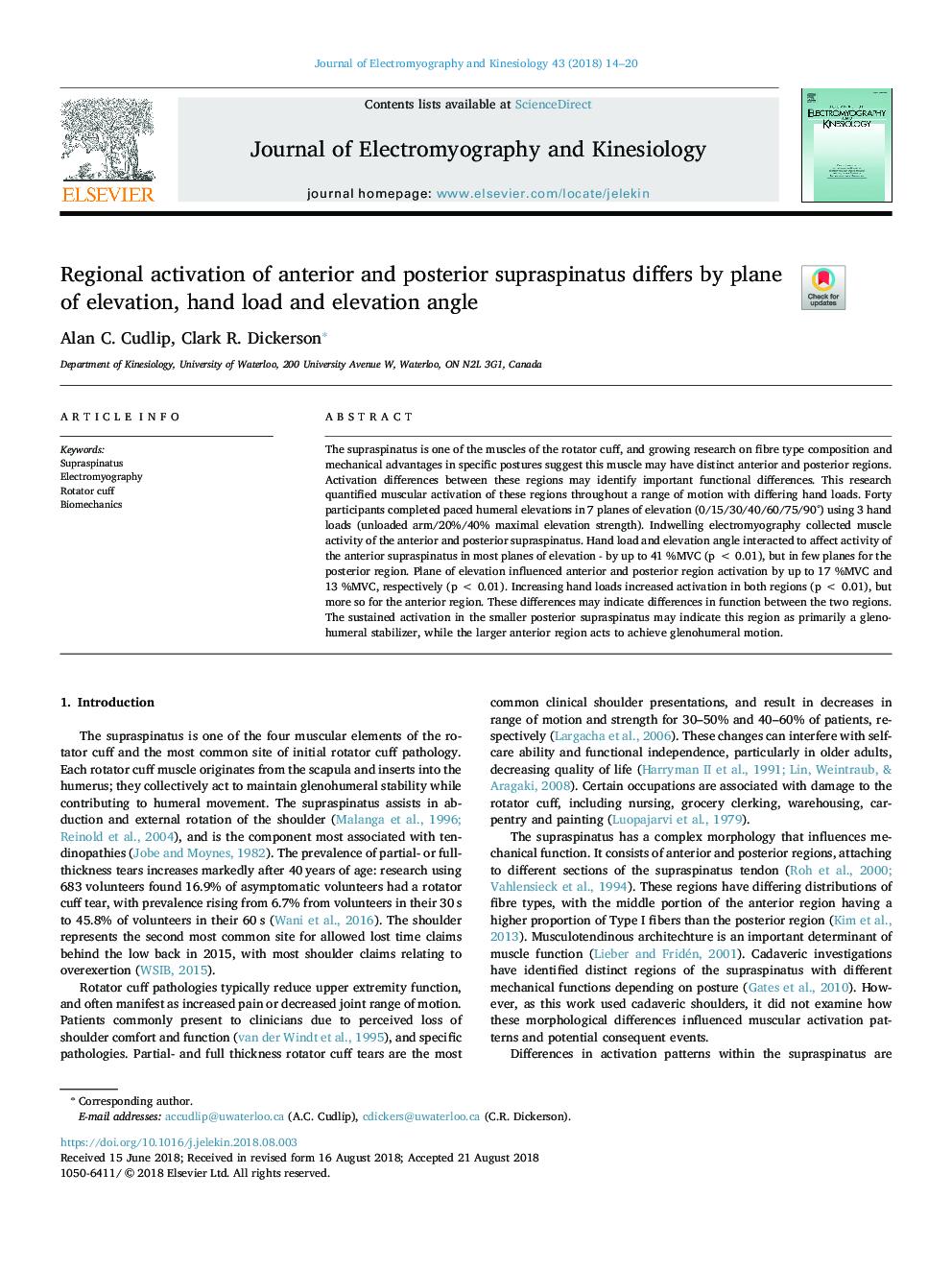| کد مقاله | کد نشریه | سال انتشار | مقاله انگلیسی | نسخه تمام متن |
|---|---|---|---|---|
| 10129859 | 1645283 | 2018 | 7 صفحه PDF | دانلود رایگان |
عنوان انگلیسی مقاله ISI
Regional activation of anterior and posterior supraspinatus differs by plane of elevation, hand load and elevation angle
ترجمه فارسی عنوان
فعال سازی منطقه ای سوپراسپیناتوس قدامی و خلفی با ارتفاع ارتفاع، بار دست و زاویه ارتفاع متفاوت است
دانلود مقاله + سفارش ترجمه
دانلود مقاله ISI انگلیسی
رایگان برای ایرانیان
کلمات کلیدی
موضوعات مرتبط
علوم پزشکی و سلامت
پزشکی و دندانپزشکی
ارتوپدی، پزشکی ورزشی و توانبخشی
چکیده انگلیسی
The supraspinatus is one of the muscles of the rotator cuff, and growing research on fibre type composition and mechanical advantages in specific postures suggest this muscle may have distinct anterior and posterior regions. Activation differences between these regions may identify important functional differences. This research quantified muscular activation of these regions throughout a range of motion with differing hand loads. Forty participants completed paced humeral elevations in 7 planes of elevation (0/15/30/40/60/75/90°) using 3 hand loads (unloaded arm/20%/40% maximal elevation strength). Indwelling electromyography collected muscle activity of the anterior and posterior supraspinatus. Hand load and elevation angle interacted to affect activity of the anterior supraspinatus in most planes of elevation - by up to 41 %MVC (pâ¯<â¯0.01), but in few planes for the posterior region. Plane of elevation influenced anterior and posterior region activation by up to 17 %MVC and 13 %MVC, respectively (pâ¯<â¯0.01). Increasing hand loads increased activation in both regions (pâ¯<â¯0.01), but more so for the anterior region. These differences may indicate differences in function between the two regions. The sustained activation in the smaller posterior supraspinatus may indicate this region as primarily a glenohumeral stabilizer, while the larger anterior region acts to achieve glenohumeral motion.
ناشر
Database: Elsevier - ScienceDirect (ساینس دایرکت)
Journal: Journal of Electromyography and Kinesiology - Volume 43, December 2018, Pages 14-20
Journal: Journal of Electromyography and Kinesiology - Volume 43, December 2018, Pages 14-20
نویسندگان
Alan C. Cudlip, Clark R. Dickerson,
